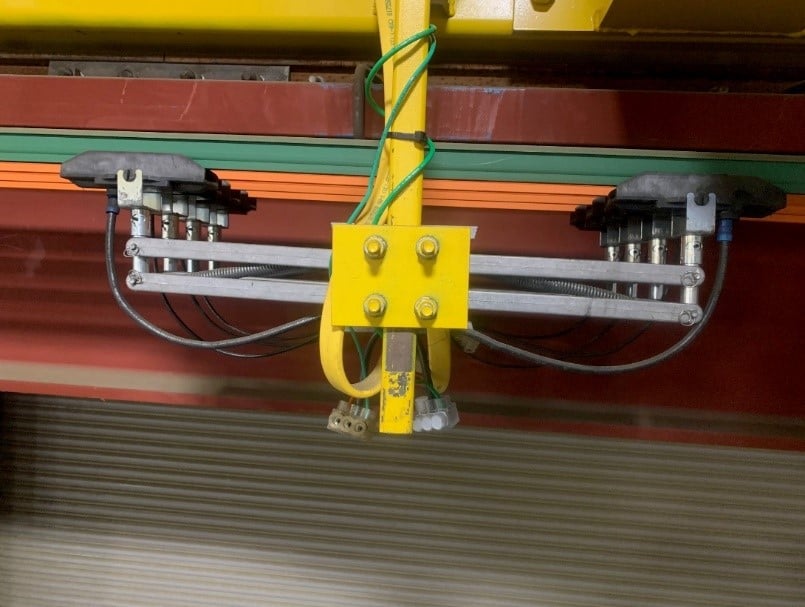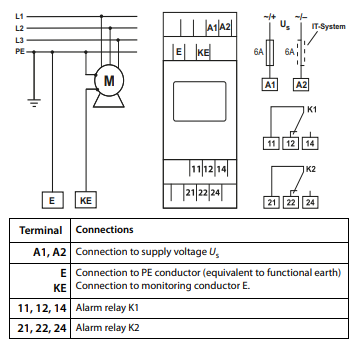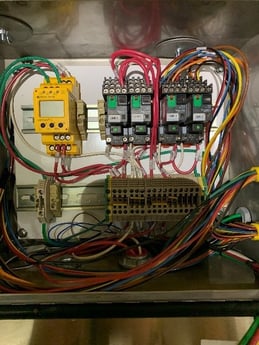Case Study: A Simple Way to Monitor Crane Grounding

Is your crane grounding being monitored properly? Since 1985, Engineered Systems has serviced crane systems. They wanted a safer system to ensure the bridge and trolley were grounded, so they reached out to Bender.
Modern overhead electric cranes are used in many different industrial and commercial facilities. They are typically powered via connection to three-phase rails and one ground rail that is suspended along their beams. They assert pressure on the conductive rails and allow for the flow of power from a source to the moving bridge that holds the trolley and hoist. The crane drive and idler wheels ride on metal beams and are usually in good contact with electric ground. In some applications materials such as dust and fibers are produced and present in the air. Over time these contaminants build up and can cause higher contact resistance or lack of connection to ground.
Image 1 shows a crane rail and dual-shoe connection system. This cradle is suspended from the moving bridge and the shoe holders and arms assert upward pressure on the shoes while they slide back-and-forth along the power rails. Over time, the connections and mechanisms can develop connection issues, which can affect the performance of the system. For instance, If the ground connection is lost there may not be any noticeable issue, but there is certainly a safety concern, since the trolley may not be adequately grounded. A ground fault on the trolley could energize the crane frame – leading to a touch potential hazard.
Sourcing a solution
The right solution for this application is the LINETRAXX® GM420. The GM420 is a loop monitor that is typically used to monitor ground bonding to fixed equipment. It takes measurements by injecting a small DC current to measure the resistance of the loop. Engineered Systems was able to install a second shoe arm to the bridge, which had to be added to allow two connection points to the ground rail, creating an electrical loop. With that second contact point, the GM420 can monitor the circuit to ensure proper crane grounding and make the system safer for plant personnel. Additional information on the GM420 can be found here.


“We were very happy with Bender’s technical support and the assistance provided to come up with a solution for the ground rail shoe contamination issue. The Bender solution proved successful after identifying a dead spot on the conductive ground rail shortly after installation.”
- Jon Smith and Stuart Reynolds, Engineered Systems
Additional factory testing confirmed proper operation of two GM420’s on two separate bridges. After the initial trial period, Engineered Systems Inc. installed limit switches to ensure the contact shoes stayed in their holders, adding additional safety. In many industrial facilities, debris can build up on the rails and cause connection issues with the grounding shoe. Since this creates a hazard to safety, Engineered Systems crane service company wanted to find a solution. Adding a Bender ground monitoring relay, like the GM420, has created a safer system.
For more information about this application or to learn more about Bender technology related to your specific application, contact our team of experts.
This article is for informational purposes only. Bender provides the information "as is" without warranty and is not responsible for its accuracy or reliability. No warranties are given regarding its suitability for any specific circumstances.



.jpg?width=352&name=Blank%20300%20x%20175%20(2).jpg)
